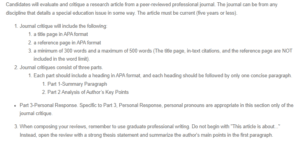Limited Involvement in Online Educational Tasks for Students with Disabilities During the COVID-19 Pandemic
Summary Paragraph
The significance of limited involvement in online educational tasks, especially among students with disabilities during the COVID-19 pandemic, cannot be understated. This low engagement formed the basis of Kim & Fienup’s (2021) research article. Kim & Fienup (2021) aimed to address the issue of children with disabilities having limited access to online special educational activities. The scholars employed a concurrent multiple baseline design to assess the efficiency of an intervention that incorporated both a task analysis and virtual rewards. The intervention led to a significant increase in students’ engagement, with large effect sizes observed for all three participants. The study highlights the importance of ensuring regular attendance and access to online learning opportunities and contributes to the discussion on equal educational access during challenging times.
Analysis of Author’s Key Points
The data clearly reveal that during the baseline phase, all three participants exhibited low engagement in online learning, where they completed an average of just 1.1 of 5 daily components (Kim & Fienup, 2021). However, after the introduction of the intervention, the student’s engagement surged, with each participant completing an average of 4.7 out of 5 daily components (Kim & Fienup, 2021). This indicates a substantial and consistent increase in student engagement due to the intervention. The effect sizes, which were measured through improvement rate differences (IRD), were impressively high, with all three participants showing a large effect. These findings confirm that the task analysis and virtual rewards significantly improved student engagement in online learning, thereby highlighting the practicality and efficacy of this approach.
Personal Response
In my personal evaluation, this study offers significant insights and a pragmatic approach to addressing the challenging issue of low engagement in remote learning, especially among students with disabilities. The authors’ selection of a concurrent multiple baseline design strengthens the credibility of their investigation, lending greater weight to their findings. It is particularly encouraging to witness the substantial impact of a simple intervention, consisting of task analysis and virtual rewards, on student engagement. Nevertheless, the potential influence of increased parent involvement is a valid concern, and it is vital for future research to differentiate the effects of the intervention from external factors. Furthermore, while the study underscores the importance of equitable access to education during a pandemic, it would be beneficial to explore the intervention’s effects on academic skills and its generalizability to diverse participant groups. Overall, Kim & Fienup’s (2021) research contributes significantly to the ongoing discourse on effective strategies for remote learning among students with special needs and the pursuit of educational equity during challenging times.
References
Kim, J. Y., & Fienup, D. M. (2021). Increasing access to online learning for students with disabilities during the COVID-19 pandemic. The Journal of Special Education, 55(4), 002246692199806. https://doi.org/10.1177/0022466921998067
ORDER A PLAGIARISM-FREE PAPER HERE
We’ll write everything from scratch
Question

Limited Involvement in Online Educational Tasks for Students with Disabilities
Candidates will evaluate and critique a research article from a peer-reviewed professional journal. The journal can be from any discipline that details a special education issue in some way. The article must be current (five years or less).
- Journal critique will include the following:
- a title page in APA format
- a reference page in APA format
- a minimum of 300 words and a maximum of 500 words (The title page, in-text citations, and the reference page are NOT included in the word limit).
- Journal critiques consist of three parts.
- Each part should include a heading in APA format, and each heading should be followed by only one concise paragraph.
- Part 1-Summary Paragraph
- Part 2 Analysis of Author’s Key Points
- Each part should include a heading in APA format, and each heading should be followed by only one concise paragraph.
- Part 3-Personal Response. Specific to Part 3, Personal Response, personal pronouns are appropriate in this section only of the journal critique.
- When composing your reviews, remember to use graduate professional writing. Do not begin with “This article is about…” Instead, open the review with a strong thesis statement and summarize the author’s main points in the first paragraph.

